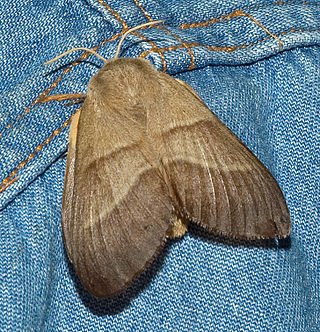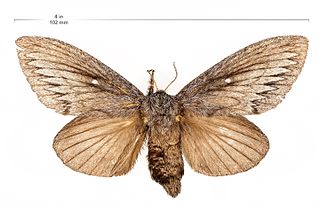Over the course of some fourteen centuries, the Romans and other peoples of Italy employed a system of nomenclature that differed from that used by other cultures of Europe and the Mediterranean Sea, consisting of a combination of personal and family names. Although conventionally referred to as the tria nomina, the combination of praenomen, nomen, and cognomen that have come to be regarded as the basic elements of the Roman name in fact represent a continuous process of development, from at least the seventh century BC to the end of the seventh century AD. The names that developed as part of this system became a defining characteristic of Roman civilization, and although the system itself vanished during the Early Middle Ages, the names themselves exerted a profound influence on the development of European naming practices, and many continue to survive in modern languages.

A bubble chamber is a vessel filled with a superheated transparent liquid used to detect electrically charged particles moving through it. It was invented in 1952 by Donald A. Glaser, for which he was awarded the 1960 Nobel Prize in Physics. Supposedly, Glaser was inspired by the bubbles in a glass of beer; however, in a 2006 talk, he refuted this story, although saying that while beer was not the inspiration for the bubble chamber, he did experiments using beer to fill early prototypes.
In ancient Rome, a gens was a family consisting of individuals who shared the same nomen gentilicium and who claimed descent from a common ancestor. A branch of gens, identified by the cognomen, was called a stirps. The gens was an important social structure at Rome and throughout Italia during the period of the Roman Republic. Much of individuals' social standing depended on the gens to which they belonged. Certain gentes were classified as patrician, others as plebeian; some had both patrician and plebeian branches. The importance of the gens as a social structure declined considerably in imperial times, although the gentilicium continued to define the origins and dynasties of the ancient Romans, including the Emperors.

Gargamelle was a heavy liquid bubble chamber detector in operation at CERN between 1970 and 1979. It was designed to detect neutrinos and antineutrinos, which were produced with a beam from the Proton Synchrotron (PS) between 1970 and 1976, before the detector was moved to the Super Proton Synchrotron (SPS). In 1979 an irreparable crack was discovered in the bubble chamber, and the detector was decommissioned. It is currently part of the "Microcosm" exhibition at CERN, open to the public.
An agnomen, in the Roman naming convention, was a nickname, just as the cognomen had been initially. However, the cognomina eventually became family names, and so agnomina were needed to distinguish between similarly-named persons. However, as the agnomen was an additional and optional component in a Roman name, not all Romans had an agnomen.

In taxonomy, a nomen nudum is a designation which looks exactly like a scientific name of an organism, and may have originally been intended to be one, but it has not been published with an adequate description. This makes it a "bare" or "naked" name, which cannot be accepted as it stands. A largely equivalent but much less frequently used term is nomen tantum. Sometimes, "nomina nuda" is erroneously considered a synonym for the term "unavailable names". However, not all unavailable names are nomina nuda.
In binomial nomenclature, a nomen dubium is a scientific name that is of unknown or doubtful application.

Weak neutral current interactions are one of the ways in which subatomic particles can interact by means of the weak force. These interactions are mediated by the Z boson. The discovery of weak neutral currents was a significant step toward the unification of electromagnetism and the weak force into the electroweak force, and led to the discovery of the W and Z bosons.

The Lasiocampinae are a subfamily of the moth family Lasiocampidae. The subfamily was described by Thaddeus William Harris in 1841.
Eutachyptera is a monotypic moth genus in the family Lasiocampidae. The genus was erected by William Barnes and James Halliday McDunnough in 1912. Its single species, Eutachyptera psidii, was first described by Sallé in 1857. It is found in Mexico.

Gloveria is a genus of moths in the family Lasiocampidae. The genus was erected by Packard in 1872. All the species in the genus are from southern North America.

Nomen illegitimum is a technical term used mainly in botany. It is usually abbreviated as nom. illeg. Although the International Code of Nomenclature for algae, fungi, and plants uses Latin terms as qualifiers for taxon names, the definition of each term is in English rather than Latin. The Latin abbreviations are widely used by botanists and mycologists.
Grandgousier is a fictional character in the story of Gargantua by François Rabelais. He is the husband of Gargamelle and the father of Gargantua.

This is a list of terms and symbols used in scientific names for organisms, and in describing the names. For proper parts of the names themselves, see List of Latin and Greek words commonly used in systematic names. Note that many of the abbreviations are used with or without a stop.
The nomen gentilicium was a hereditary name borne by the peoples of Roman Italy and later by the citizens of the Roman Republic and the Roman Empire. It was originally the name of one's gens by patrilineal descent. However, as Rome expanded its frontiers and non-Roman peoples were progressively granted citizenship and concomitant nomen, the latter lost its value in indicating patrilineal ancestry.

André Lagarrigue (1924 – 14 January 1975) was a French particle physicist. Being the initiator of the Gargamelle experiment at CERN, his work was of paramount importance in the discovery of neutral currents — the first experimental indication of the existence of the Z0 boson. This major discovery was a step towards verification of the electroweak theory, today a pillar of the Standard Model.
Gloveria howardi is a moth in the family Lasiocampidae.
Gloveria concinna is a species of moth in the family Lasiocampidae.








